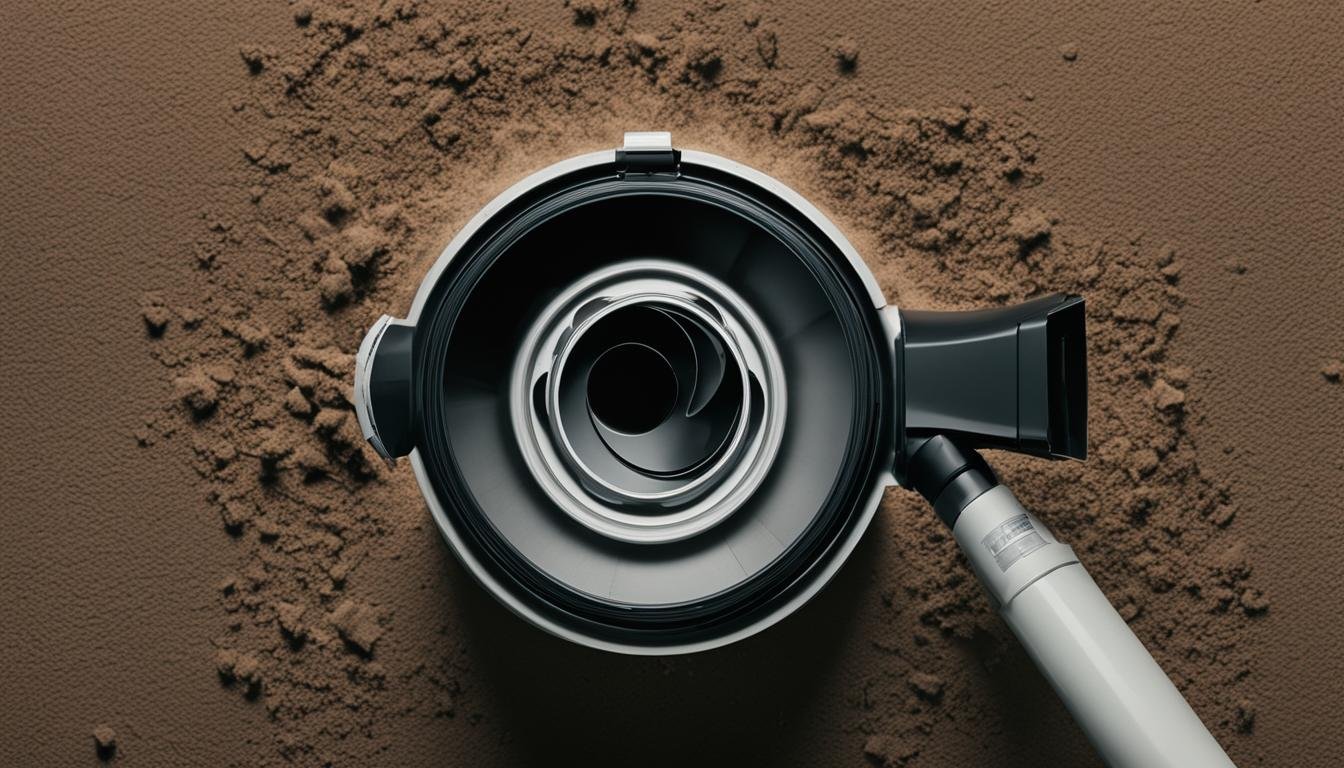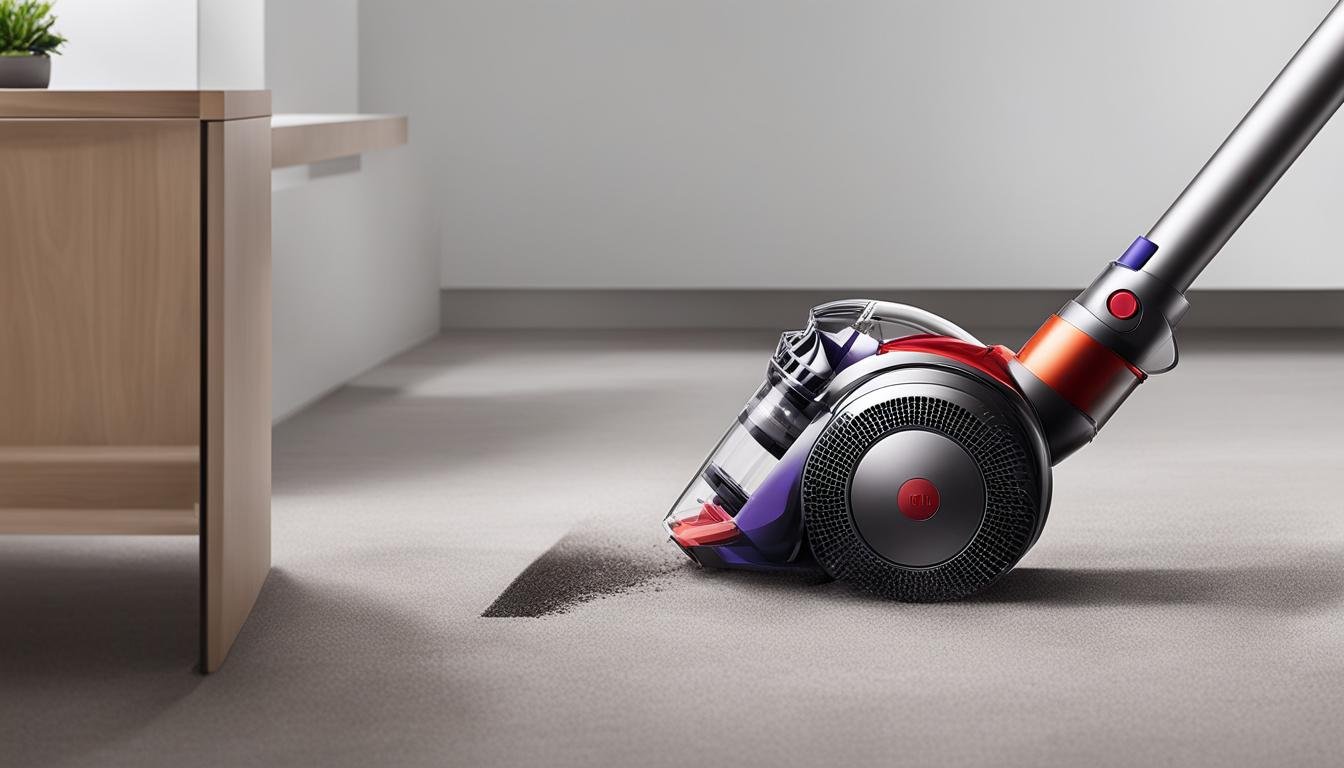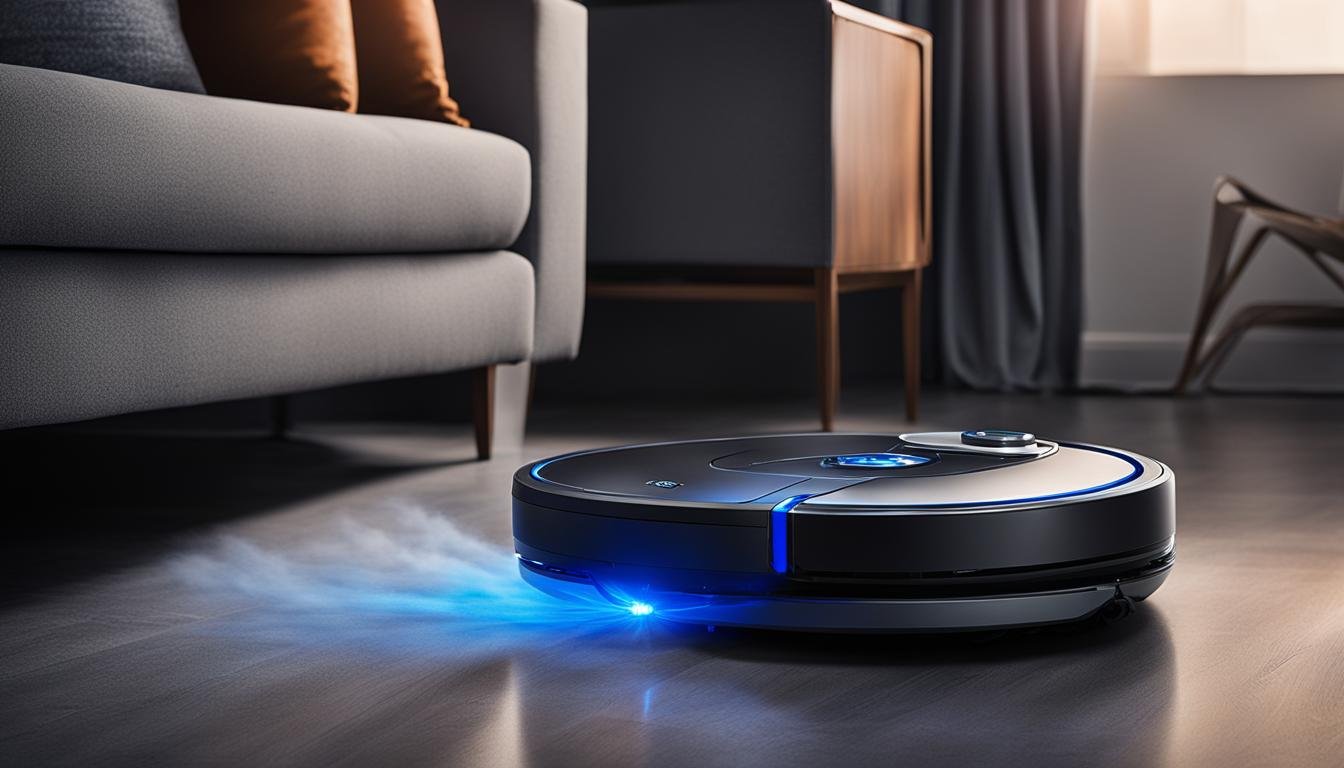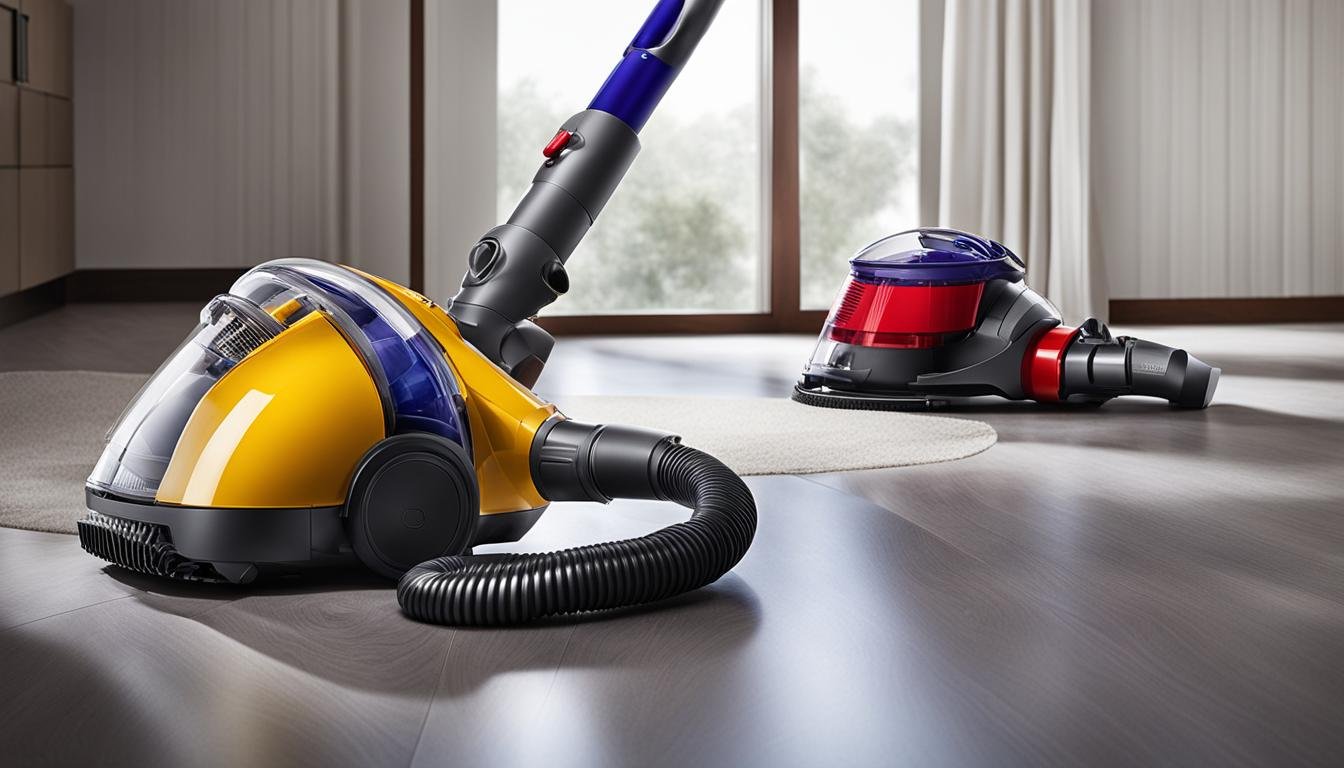Cleaning your vacuum cleaner is vital for maintaining its performance and ensuring a healthy living environment. According to a study published in the journal Applied and Environmental Microbiology, uncleaned vacuum cleaners can spread harmful particles that may affect your health, especially if you have allergies.
To keep your vacuum cleaner in top shape, it’s essential to regularly empty its canister, clean the brushes and bristles, wash the filters, and deep clean the entire vacuum.
In this article, I will provide a comprehensive step-by-step guide on how to empty vacuum cleaner and maintain its cleanliness for long-lasting performance.
Key Takeaways:
- Regularly emptying your vacuum cleaner’s canister improves its suction power and efficiency.
- Properly cleaning the brushes and bristles maintains optimal functionality and ensures effective dirt removal.
- Deep cleaning and maintaining your vacuum annually helps remove trapped dirt and bacteria, prolonging its lifespan.
- Follow the manufacturer’s instructions and refer to the manual for specific cleaning recommendations.
- Dispose of the collected dirt and debris properly to avoid any contamination.
How to empty vacuum cleaner: Best practices
Emptying the vacuum canister is an essential step in maintaining the cleanliness and optimal performance of your vacuum cleaner. By regularly emptying the canister, you can prevent the buildup of dirt, germs, and bacteria, ensuring that your vacuum continues to pick up dirt and dust efficiently.
Here are some expert tips on how to empty your vacuum canister effectively:
- Empty after every use: It is recommended to empty the canister after each vacuuming session or when it reaches half to two-thirds of its capacity. This prevents the canister from becoming overly full, which can impact the suction power of your vacuum.
- Remove the canister: To empty the canister, gently remove it from the vacuum cleaner. Refer to your vacuum’s manual for specific instructions on how to detach the canister.
- Open the lid or release the latch: Once the canister is detached, locate the lid or latch that secures the canister. Open the lid or release the latch to gain access to the contents inside.
- Empty into a trash bin: Hold the canister over a trash bin and gently pour out the collected dirt and debris. Be cautious not to spill or scatter the contents around.
- Dispose of properly: After emptying the canister, dispose of the dirt and debris in a trash bag and seal it tightly. This ensures proper containment and prevents any potential contamination.
Regularly emptying the canister not only maintains the cleanliness of your vacuum cleaner but also improves its suction power. A clean canister allows for unimpeded airflow, optimizing the performance of the vacuum.
“Emptying the vacuum canister after each use helps maintain the cleanliness and optimal performance of your vacuum cleaner.”
Remember to empty the canister in a well-ventilated area to minimize the spread of dust and allergens. If you have a bagged vacuum cleaner, follow the manufacturer’s instructions on how to empty and dispose of the bag.
By following these proper emptying techniques, you can ensure that your vacuum cleaner remains in top condition, providing efficient cleaning for years to come.
Tips for Efficient Vacuum Canister Emptying:
“Regularly emptying the vacuum canister prevents dirt buildup, ensures optimal performance, and maintains a clean and healthy home environment.”
Properly emptying your vacuum canister is just one aspect of maintaining your vacuum cleaner. In the next section, we will discuss the importance of cleaning the brushes and bristles to ensure the longevity and functionality of your vacuum cleaner.
Cleaning the Brushes and Bristles: Maintaining Optimal Functionality
The brushes and bristles of your vacuum cleaner play a crucial role in effectively removing dirt and debris from your floors. To ensure their optimal functionality, it’s important to clean them regularly.
After each use, check the brushes and bristles for any trapped debris or hair. If you find any, use a pair of scissors to cut them out carefully, making sure not to damage the bristles.
| Benefits of Cleaning the Brushes and Bristles Regularly: |
|---|
| 1. Improves suction power for better cleaning performance. |
| 2. Prevents clogs and blockages in the vacuum cleaner. |
| 3. Removes trapped dirt, dust, and hair for a hygienic cleaning experience. |
| 4. Extends the lifespan of your vacuum cleaner. |
After removing the debris, spray the brushes with a disinfectant spray to sanitize them. Regularly cleaning the brushes and bristles helps maintain the efficiency and performance of your vacuum cleaner, ensuring that it continues to effectively clean your floors.
Expert Tip:
For stubborn debris that is hard to remove, try using a toothbrush or a soft-bristle brush to gently dislodge it. This will help avoid any damage to the brushes and bristles while ensuring a thorough cleaning.
By giving your vacuum’s brushes and bristles regular attention, you not only maintain the optimal functionality of your vacuum cleaner but also extend its lifespan. Clean brushes and bristles promote better dirt and debris pickup, ensuring your floors remain clean and fresh.
Next, we’ll explore the importance of deep cleaning your vacuum cleaner and how it contributes to its long-lasting performance.
Deep Cleaning and Maintaining the Vacuum: Long-Lasting Performance
Deep cleaning your vacuum cleaner is crucial for maintaining its optimal performance and ensuring its longevity. Regular maintenance plays a key role in keeping your vacuum in top shape and providing efficient cleaning for your home.
To start, refer to your vacuum’s manual to properly detach all the parts. This step is important to prevent any damage during the cleaning process. Afterward, soak the washable parts, including the canister and attachments, in warm soapy water and scrub them thoroughly. This helps remove any built-up dirt and grime.
Next, use a can of compressed air to clean the nooks and crannies of the vacuum, eliminating any hidden dust or debris. This step enhances the overall cleanliness and performance of your vacuum cleaner. Once everything is clean and dry, reassemble the vacuum and give the external parts a final touch by spraying with a disinfectant spray.
By performing deep cleaning and regular maintenance, you improve the efficiency and lifespan of your vacuum cleaner. Embrace these best practices to ensure long-lasting performance and enjoy a cleaner, healthier home.






Leave a Reply